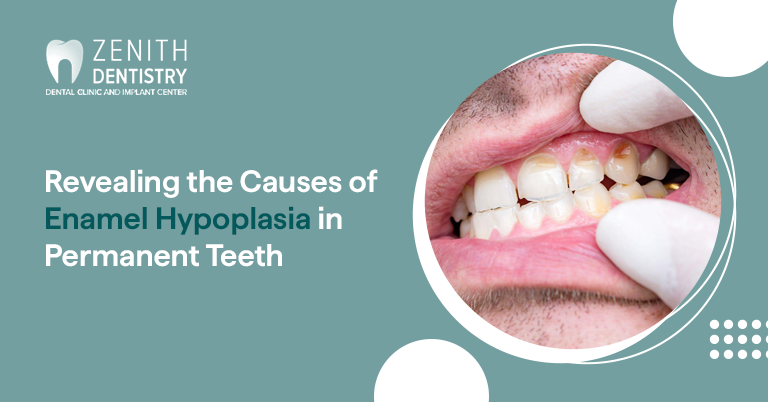
Revealing the Causes of Enamel Hypoplasia in Permanent Teeth
Enamel hypoplasia is a dental condition that affects the development of the enamel, the outer layer of our teeth. It is characterized by thin or missing enamel, which can lead to tooth sensitivity, discoloration, and increased vulnerability to tooth decay. Understanding the causes of enamel hypoplasia is crucial for prevention and effective dental care.
In this blog post, we will delve into the various factors that contribute to this condition and how they impact permanent teeth.
What is Enamel Hypoplasia?
Enamel hypoplasia occurs when the enamel does not develop properly during tooth formation. It can affect both baby teeth and permanent teeth, but it is particularly concerning when it affects permanent teeth as they are meant to last a lifetime. Enamel hypoplasia can manifest as pits, grooves, or areas of thin enamel, leaving the teeth more susceptible to damage and decay.
Causes of Enamel Hypoplasia in Permanent Teeth
Several factors can contribute to the development of enamel hypoplasia in permanent teeth. Here are some of the common causes which are worth exploring:
1) Malnutrition
Inadequate nutrition, especially during early childhood, can significantly impact tooth development. Malnutrition, particularly deficiencies in essential nutrients like vitamins A, C, and D, calcium, and phosphorus, can disrupt the formation of enamel, leading to enamel hypoplasia.
2) Illnesses and Infections
Certain illnesses and infections during childhood can interfere with the normal development of teeth, including permanent teeth. High fever, severe infections, and systemic conditions like measles, mumps, or chickenpox can disrupt enamel formation and result in enamel hypoplasia.
3) Medications and Medical Treatments
Some medications and medical treatments administered during early childhood can affect tooth development. For example, certain antibiotics (e.g., tetracycline) and chemotherapy drugs have been linked to enamel hypoplasia in permanent teeth.
4) Trauma or Injury
Trauma or injury to the teeth, such as a severe blow or impact, can disrupt the enamel formation process. The trauma may occur during tooth development or after the teeth have erupted, leading to enamel hypoplasia.
5) Genetic Factors
In some cases, enamel hypoplasia can be attributed to genetic factors. Certain genetic conditions and syndromes can affect enamel development, leading to enamel hypoplasia in permanent teeth.
Prevention and Treatment
While enamel hypoplasia cannot be reversed, there are preventive measures and treatment options available to manage the condition effectively. Here are some approaches:
- Good Oral Hygiene – Maintaining proper oral hygiene, including regular brushing with a soft-bristled toothbrush and fluoride toothpaste, helps protect and strengthen the existing enamel.
- Regular Dental Check-ups – Scheduling regular dental check-ups allows for early detection and intervention, enabling the dentist to monitor and address any signs of enamel hypoplasia or associated dental problems promptly.
- Fluoride Treatment – Dentists may recommend fluoride treatments to help strengthen the enamel and reduce the risk of tooth decay.
- Dental Sealants – Dental sealants, a protective coating applied to the chewing surfaces of the teeth, can provide an additional layer of defense against tooth decay and damage.
- Restorative Procedures – Depending on the severity of enamel hypoplasia, restorative procedures such as dental bonding, veneers, or crowns may be recommended to improve the appearance and functionality of the affected teeth.
Conclusion
Enamel hypoplasia in permanent teeth is a dental condition that requires attention and care. By understanding the causes of enamel hypoplasia, we can take preventive measures and seek appropriate treatment to maintain oral health. Regular dental check-ups, good oral hygiene practices, and timely intervention are key to managing enamel hypoplasia effectively. Remember, early detection and proactive dental care play a crucial role in ensuring the longevity and health of your permanent teeth.






